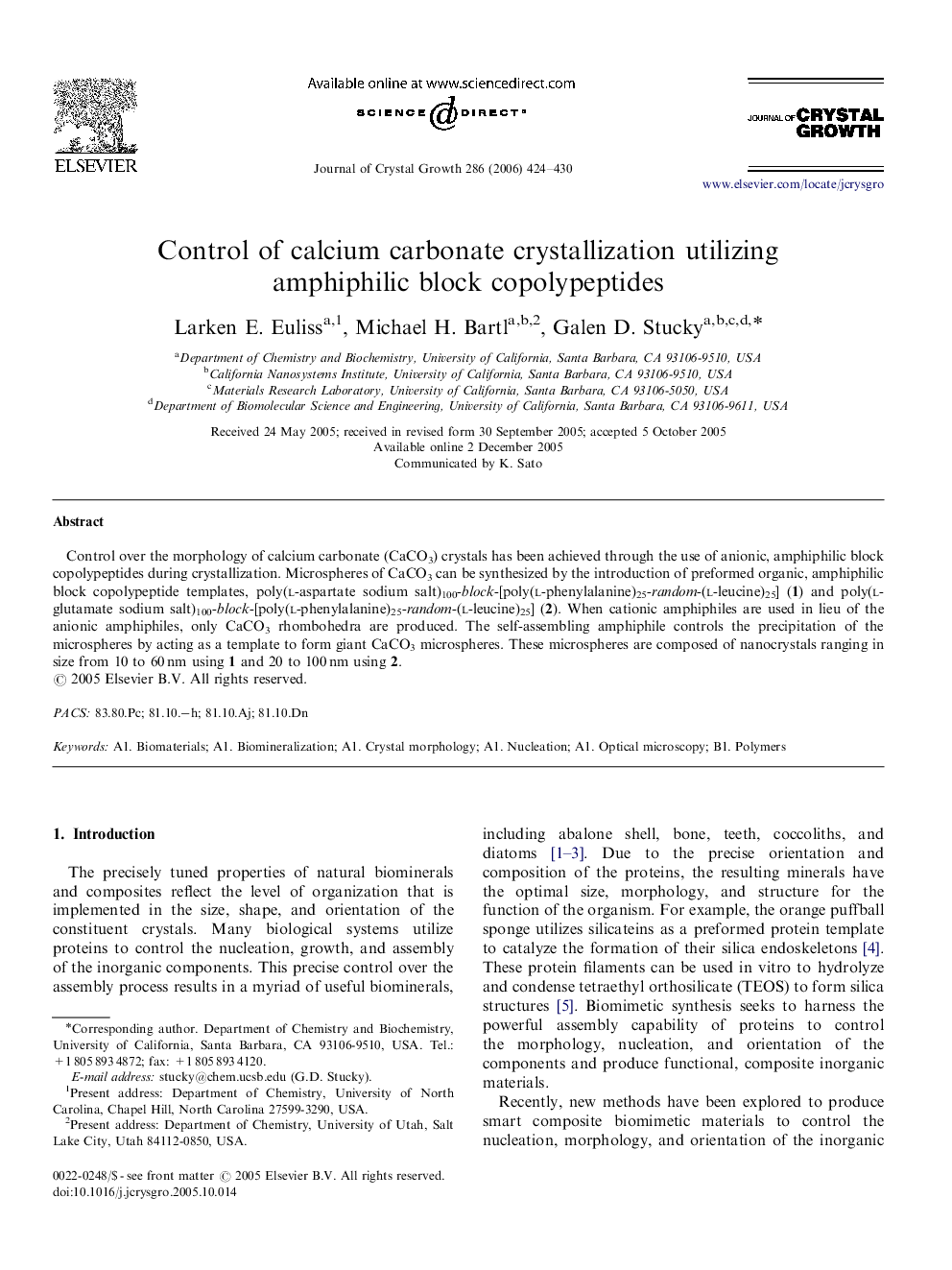| Article ID | Journal | Published Year | Pages | File Type |
|---|---|---|---|---|
| 1797044 | Journal of Crystal Growth | 2006 | 7 Pages |
Control over the morphology of calcium carbonate (CaCO3) crystals has been achieved through the use of anionic, amphiphilic block copolypeptides during crystallization. Microspheres of CaCO3 can be synthesized by the introduction of preformed organic, amphiphilic block copolypeptide templates, poly(l-aspartate sodium salt)100-block-[poly(l-phenylalanine)25-random-(l-leucine)25] (1) and poly(l-glutamate sodium salt)100-block-[poly(l-phenylalanine)25-random-(l-leucine)25] (2). When cationic amphiphiles are used in lieu of the anionic amphiphiles, only CaCO3 rhombohedra are produced. The self-assembling amphiphile controls the precipitation of the microspheres by acting as a template to form giant CaCO3 microspheres. These microspheres are composed of nanocrystals ranging in size from 10 to 60 nm using 1 and 20 to 100 nm using 2.
